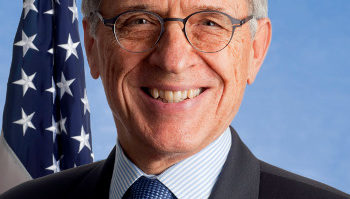Recently the discussion about how to save the AM band has been raging more fiercely than ever. But it’s not a cut-and-dried argument.

Technology in new cars is becoming digital in most other ways, so it’s no surprise that the AM band’s future in automobiles has been a hot topic. Is it time for manufacturers to take it behind the barn? Should they still include the AM band?
You’d be surprised at the number of radio operators and consumers who tell me AM is indeed worth saving. The band provides key programming including religious, sports, news, talk and multi-cultural. Supporters say the band also plays an essential role to the safety framework that could prove critical to our national defense.
Even the hand of government is weighing in, with Congress considering a mandate to include AM in all new vehicles.
That said, I think there’s an alternative approach.
For AM to remain viable and for manufacturers to continue to be willing to include it in future vehicles, the technology simply must be updated. We need to FIX the AM band.
And that means converting all AM radio station signals into pure digital signals. A few stations have made this change. But converting a station to the MA3 mode of HD Radio comes at a steep cost, up to $40K to $60K per station. It begs the question, “How could we afford it as operators?”
My proposition is a radio bailout for small and mid-size operators by the federal government, managed by the FCC. In addition, Congress should provide a tax incentive for large and major-market AM operators.
I believe this is the only real and sustainable strategy and that time is running out to move the discussion forward. Personally, I’m a fan of the band. Some of our nation’s most iconic stations are AM, and we shouldn’t just pull the plug. Which leads me to key questions that need to be asked if we hope to revive it. Hopefully these will spark more critical discussion.
Q: Converting to all-digital means I will lose my analog AM Listeners. Isn’t that bad?
A: Making this move will of course cause the erosion of a station’s audience except for people with HD Radio-capable receivers. However, AM is continuing to lose its market share each month. According to Nielsen, 19.3 percent of all listening in 2008 was AM. By 2014, it dipped to 11.5 percent, and currently it’s down to just 8.8 percent. The writing on the wall indicates the future would be much brighter in all digital. In addition, as more auto manufacturers place HD Radio in cars, it will further enhance the offering and perception of radio technology. The future is in improving the quality and the delivery that digital will provide. Moreover, a hybrid signal is a weak product offering compared with a full digital signal.
It’s a hard pill to swallow, but analog technology is being phased out everywhere, so failure to convert is no longer an option if you hope to grow and retain listeners in the long term.
Q: How can AM stations afford the technical equipment and infrastructure changes that will probably be required?
A: It will be costly to change, though new technology and software can greatly reduce costs. But realistically the government will need to assist — with tax incentives, or a financial package for the small and mid-size operators, or a combination of these. The FCC could pay owners not to use the analog portion of the signal. If something like this is not put in motion, the band as a viable consumer option will eventually fade away.
Q: Why haven’t more AM stations flipped to all-digital? A small number who have tried it, and fewer have stayed with it.
A: One reason is probably a lack of awareness of the benefits in audio, signal coverage and dashboard display features. But cost and programming considerations are probably the main factors. It is costly to launch a new format without a readily available audience. Yet I believe moving to all-digital is the best and only option for AM radio.
Q: Pursuing a spectrum bailout and/or federal support program seems like a big lift in today’s challenging political environment. What people or organizations might be candidates to lead the charge, and in what form?
A: A bailout is a heavy lift. However, increased vitality of the AM band would allow the free listening market to benefit from expanded programming options and owner/operators to benefit from audience expansion. Currently audience share is dwindling fast, and this is the only way to stop the bleeding. All-digital would also provide operators with new and lucrative revenue streams.
I think this is a task for the National Association of Broadcasters. They can certainly lead the charge before the FCC, representing the industry and station owners. Moreover, consolidated companies have the capital to lead the charge. Tax incentives would bring down the costs of conversion and awareness.
I believe this strategy to be the only feasible option to ensure the survival of the AM band. After a storied history, it would be a shame for it to just fade out like a weak signal.
Comment on this or any article. Email [email protected].






